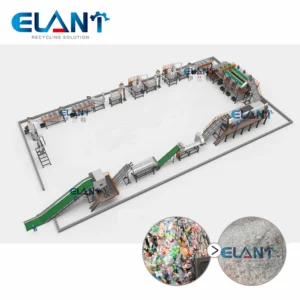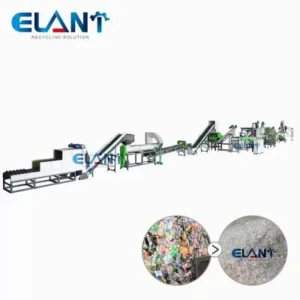PET (Polyethylene Terephthalate) recycling machines are pivotal in the sustainable management of plastic waste. These sophisticated machines transform used PET bottles into reusable materials, significantly reducing environmental impact. Proper maintenance of PET recycling machines is crucial for ensuring their efficiency, longevity, and reliability. This article provides a comprehensive guide on the best maintenance techniques for PET recycling machines, helping operators optimize performance and extend equipment lifespan.

The Importance of Regular Maintenance
Regular maintenance of PET recycling machines is essential to prevent unexpected breakdowns and ensure smooth operation. It helps in:
Maximizing Efficiency: Well-maintained machines operate at peak performance, increasing the throughput and quality of recycled PET.
Reducing Downtime: Preventive maintenance minimizes the risk of sudden failures, reducing downtime and associated costs.
Extending Lifespan: Proper care and timely repairs can significantly extend the life of the machinery, providing better returns on investment.
Ensuring Safety: Regular inspections and maintenance ensure that the machines operate safely, protecting workers from potential hazards.
Key Components of PET Recycling Machines
Understanding the key components of PET recycling machines is vital for effective maintenance. The primary components include:
Sorting System: Responsible for separating PET bottles from other materials.
Shredders: Used for reducing the size of PET bottles into smaller flakes.
Washing System: Cleans the PET flakes by removing contaminants.
Separation Units: Further purify the PET flakes by removing remaining impurities.
Drying Systems: Eliminate moisture from the cleaned PET flakes.
Extrusion and Pelletizing Units: Melt and reshape the PET flakes into pellets for reuse.
Daily Maintenance Practices
Daily maintenance routines are critical for the consistent performance of PET recycling machines. These practices include:
1. Visual Inspections
Conduct daily visual inspections of the entire machine to identify any obvious signs of wear, damage, or leaks. Check for loose bolts, unusual noises, and any irregularities in the machine’s operation.
2. Cleaning
Regular cleaning prevents the buildup of dust, dirt, and contaminants that can impair machine performance. Ensure all parts, especially the shredders and washing systems, are cleaned thoroughly after each shift.
3. Lubrication
Lubricate moving parts as per the manufacturer’s recommendations. Proper lubrication reduces friction, prevents wear, and ensures smooth operation. Use the appropriate type of lubricant for each component.
Weekly Maintenance Practices
Weekly maintenance practices involve more detailed inspections and minor adjustments to keep the machine running efficiently.
1. Detailed Inspections
Perform a comprehensive inspection of all critical components. Check for wear and tear on belts, gears, and bearings. Inspect electrical connections and sensors for signs of damage or corrosion.
2. Calibration
Calibrate sensors and other measuring devices to ensure they provide accurate readings. Proper calibration is crucial for maintaining the quality of the recycled PET.
3. Component Cleaning
Deep clean the sorting, shredding, and washing systems. Remove any residual materials that may have accumulated over the week. Pay special attention to areas that are prone to clogging.
Monthly Maintenance Practices
Monthly maintenance routines involve thorough checks and servicing of more complex machine parts.
1. Systematic Checks
Check the alignment of the shredders and conveyor belts. Misalignment can lead to uneven wear and reduced efficiency. Adjust and realign as necessary.
2. Filter Replacement
Replace or clean filters in the washing and drying systems. Clogged filters can reduce water flow and drying efficiency, affecting the quality of the recycled PET.
3. Software Updates
Update the machine’s software and control systems to the latest versions provided by the manufacturer. Software updates often include performance enhancements and bug fixes.
Quarterly Maintenance Practices
Quarterly maintenance is more comprehensive and may require the machine to be taken offline for a short period.
1. Full System Audit
Conduct a full system audit to assess the overall condition of the machine. This includes inspecting all mechanical and electrical components, verifying safety mechanisms, and reviewing performance logs.
2. Wear and Tear Analysis
Analyze wear and tear on critical parts such as blades, motors, and drive systems. Replace any parts that show significant wear to prevent unexpected failures.
3. Cooling System Check
Inspect and service the cooling systems, ensuring they are free of blockages and operating efficiently. Overheating can cause severe damage to the machine.
Annual Maintenance Practices
Annual maintenance involves a complete overhaul of the PET recycling machine, ensuring it is in optimal condition for the coming year.
1. Comprehensive Overhaul
Disassemble key components for a thorough inspection and servicing. Clean, repair, or replace parts as necessary. Reassemble the machine carefully, ensuring all components are correctly aligned and secured.
2. Professional Servicing
Consider hiring professional technicians for an annual service. They can provide expert insights and perform maintenance tasks that require specialized skills and equipment.
3. Performance Review
Review the machine’s performance over the past year. Analyze data to identify trends and areas for improvement. Adjust maintenance practices based on these findings to enhance future performance.
Maintenance Documentation
Maintaining detailed records of all maintenance activities is crucial for effective management. Documentation should include:
Maintenance Logs: Record all inspections, repairs, and replacements, noting the date and technician involved.
Performance Data: Track machine performance metrics, such as throughput, energy consumption, and downtime.
Parts Inventory: Keep an inventory of spare parts and consumables, ensuring that critical items are always in stock.
Maintenance Schedule: Develop and adhere to a maintenance schedule, outlining daily, weekly, monthly, quarterly, and annual tasks.
Training and Safety
Proper training and safety protocols are essential for effective maintenance. Ensure that all operators and maintenance personnel are trained in:
Machine Operation: Understand the function and operation of each component.
Safety Procedures: Follow safety protocols to prevent accidents and injuries.
Maintenance Techniques: Perform maintenance tasks correctly and efficiently.

Conclusion
Proper maintenance of PET recycling machines is essential for their efficient and reliable operation. By following a structured maintenance schedule, conducting regular inspections, and keeping detailed records, operators can ensure their machines run smoothly and efficiently. Investing time and resources in maintenance not only extends the lifespan of the equipment but also enhances the overall sustainability and profitability of the recycling process. As the demand for recycled PET continues to grow, maintaining these machines will play a crucial role in meeting environmental goals and supporting a circular economy.
